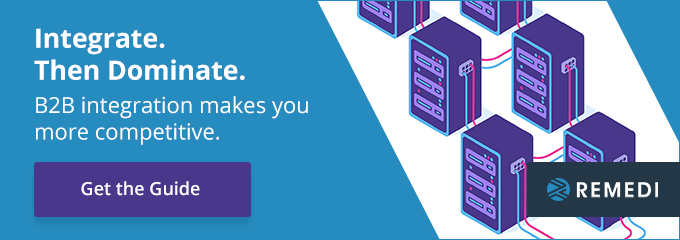
What’s the relationship between your integration architecture and your business goals? It’s a much closer linkage than you think: the proper integration architecture enables you to be more efficient and profitable.
In this article, we’ll explore how your integration architecture can support your business goals so you can be efficient, experience growth, and stay sustainable and relevant for years to come. Are You Ready to integrate?
What Are Your Business Goals?
Regardless of your industry, there are certain goals all businesses have:
- Efficiency
- Growth
- Sustainability and survival
Efficient businesses use minimal resources to generate high output. “Growth” means that the company’s revenues increase. In business terms, “sustainability” refers to ongoing success – you stay relevant for years to come.
In the next section, we’ll look at how integration architecture affects your ability to meet your business goals.
Integration Architecture and Business Goals
Depending on which integration architecture you’re using, you could be meeting your business goals or falling far behind.
The proper integration architecture allows you to be more efficient, experience higher growth, and ensure the company’s survival. With a comprehensive B2B integration solution, you:
- Gain real-time insight into your supply chain
- Onboard trading partners quickly
- Integrate new streams of information so that you can keep up with the speed of business

Gain Real-Time Insight into Your Supply Chain
Modern integration architecture utilizes APIs, which give you real-time insight into your supply chain.
With APIs, you can query information about things like order status. You could find out immediately if there's a delay in a shipment, so you could be proactive and find another supplier quickly.
Onboard Trading Partners Quickly
If you're not using modern integration architecture, onboarding new trading partners can take at least a month. If it's a customer, that means the customer can't buy from you for at least 30 days, so you miss out on revenue; if it's a supplier, you won't be able to purchase crucial materials for at least that long. What happens if, after the onboarding process is complete, the supplier can't deliver? You go through the whole process yet again.
Thanks to APIs, modern integration architecture speeds up the onboarding process without increasing your organization's risk. You won't miss out on orders, and you'll be able to get the critical supplies you need faster.
Integrate New Streams of Information So You Can Keep up with the Speed of Business
Once upon a time, the only information streams available to a company were internal – you relied upon your records systems to keep you informed on what was going on. Today, there are internal and external streams of information available to help you make better business decisions: blockchain, social media, mobile device data, and IoT devices.
Modern integration architecture makes use of these streams so you can be proactive about changing business conditions. Moreover, your trading partners may someday only want to do business with you if you utilize these information streams.
Choose the Right Integration Architecture to Support Your Business Goals
The proper integration architecture gives you real-time information, faster onboarding, and access to a wide variety of information streams to help you meet your business goals. Integrate. Then Dominate.




